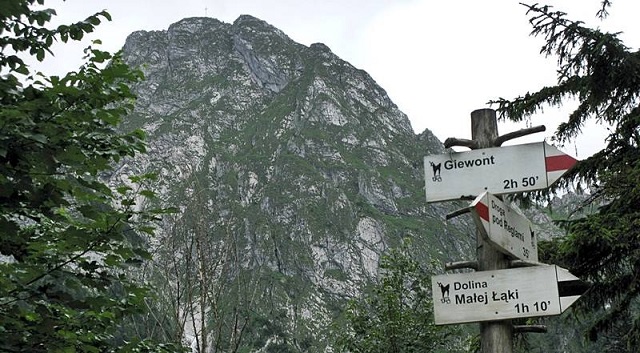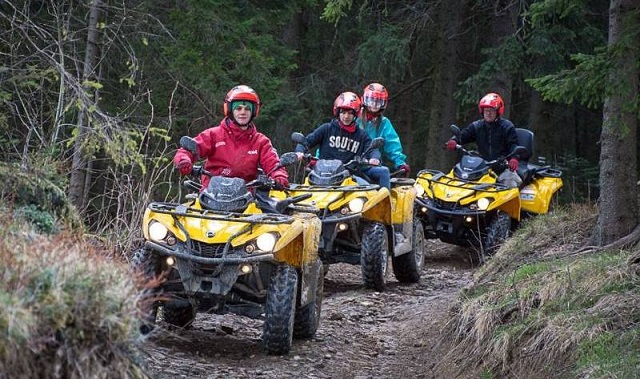Zakopane is a lovely town situated at the foothills of the majestic Tatra mountains. It has a population of 30,000 inhabitants. The unusual location of the town, hidden between a gentle range of Guba?ówka and the rocky Tatra summits was a decisive factor in its career as a tourism centre. As early as at the end of the 18th century Zakopane, a small and remote village located at the southern end of Poland, started to attract the first summer holidaymakers. The visitors arrived mainly from Cracow in horse carts, often carrying various domestic equipment, which they couldn't find in the modest highland peasant cottage. In 1889 Zakopane obtained the status of a health resort attracting patients suffering from tuberculosis. When, in 1898 the construction works on a railway track were finished, the first train from Cracow reached the town. This resulted in a rapid increase in the number of tourists from 1600 in 1898 to over 10,000 in 1900 (over 3 million at present).
The thirties of the 20th century were a period of a sudden skiing boom. Before the outbreak of the Second World War two huge investments in Zakopane had been finished, which secured Zakopane's status as the winter capital of Poland. In 1936 a cableway to Kasprowy Wierch (1,998 m above the sea level) was constructed in just six months. Soon afterwards, in 1938 a chair rail which took the tourists from the centre of Zakopane to Guba?ówka, where they could admire beautiful views over the Tatra mountains stretching away from the hill, was opened.
During the Second World War uninvited guests started to appear in the town. They were the Nazis and their families who used the confiscated hotels and boarding houses to spend their holidays in. Many of the Tatra tourist guides and Zakopane skiers put their life at risk during the war, helping the refugees to cross the Polish border through the mountains.
After the war, till the end of the 80s, Zakopane was mainly visited by Polish tourists who spent there their summer and winter holidays, because traveling abroad was very difficult to organize until 1989. After the collapse of the communism the number of Polish tourists visiting the Tatra Mountains decreased slightly, but more and more international visitors began to come to Zakopane.
1. Zakopane in Summer - walks and hikes.

The Dolinki (valleys) Reglowe (Olczyska, Strazyska, Za Bramka, Malej Laki) are very inviting places for romantic walks and easy hikes. More experienced hikers can choose one of the 275 km of marked tourist trails in the Tatra National Park. One can also consider planning the trekking tour between the mountain shelters but it is necessary to booked your beds in the shelters in advance.
2. Zakopane in Summer - horse-drawn carriage rides.

In the Chocholowska Valley and Ko?cieliska Valley (on the picture above), an alternative to walking is a ride in a horse-drawn carriage. In the first valley, the carriage can give you a lift to the very entrance of the mountain shelter Chocholowska, while in the Koscieliska Valley horses can't ride further than to Polana Pisana, which is situated 30 minutes walk from the mountain shelter Ornak.
3. Zakopane in Summer - quad-bike tours, MTB rides, climbing

Zakopane has some great ideas for those who are looking for something more exhilarating. Quad-Bike rides and expeditions (on the picture above) through the Podhale forests and fields will certainly be unforgettable. The more ecological but still excited option is a mountain bike downhill ride from the top of Guablowka Hill to the centre of Zakopane. But the most challenging of the extremal activities available in summer in Zakopane is the climbing in the High Tatras.